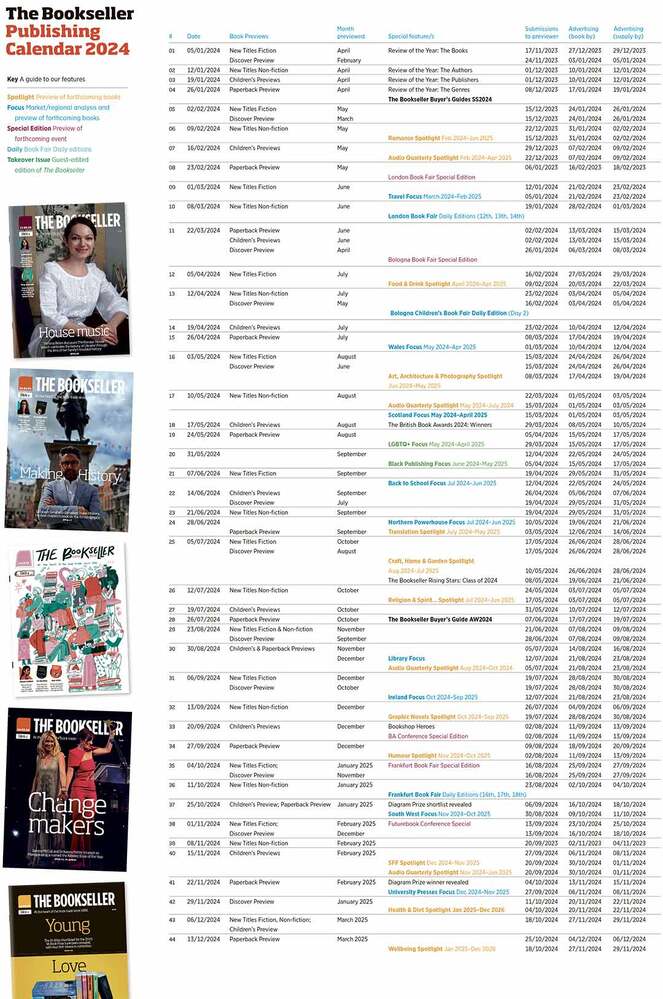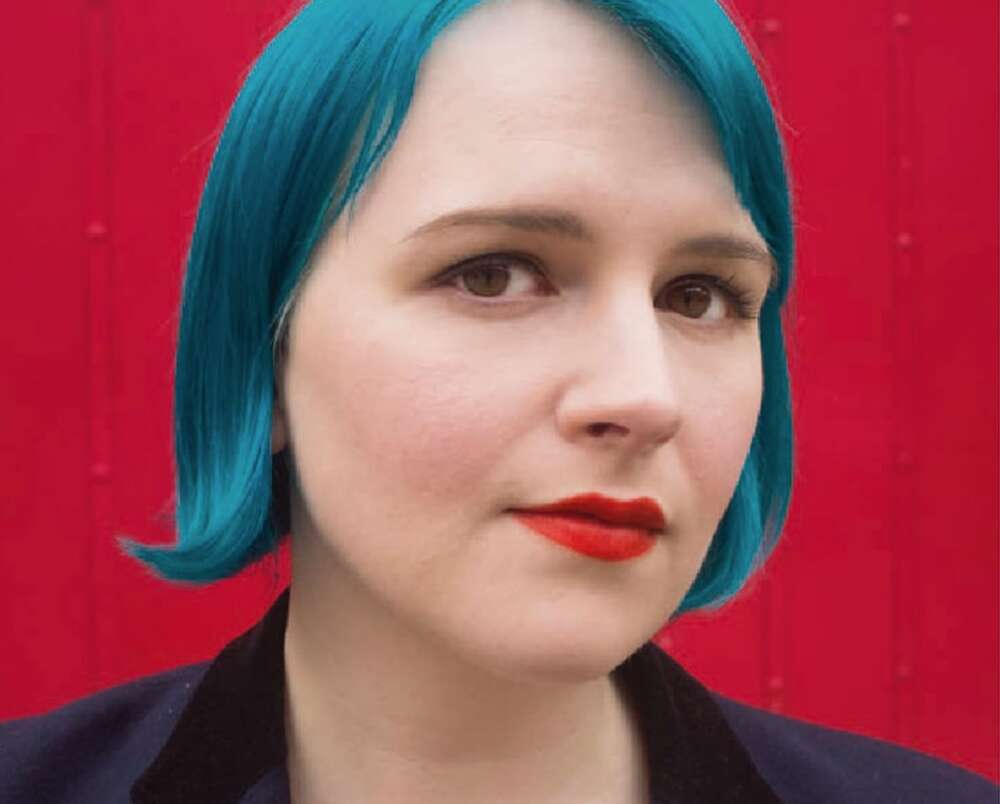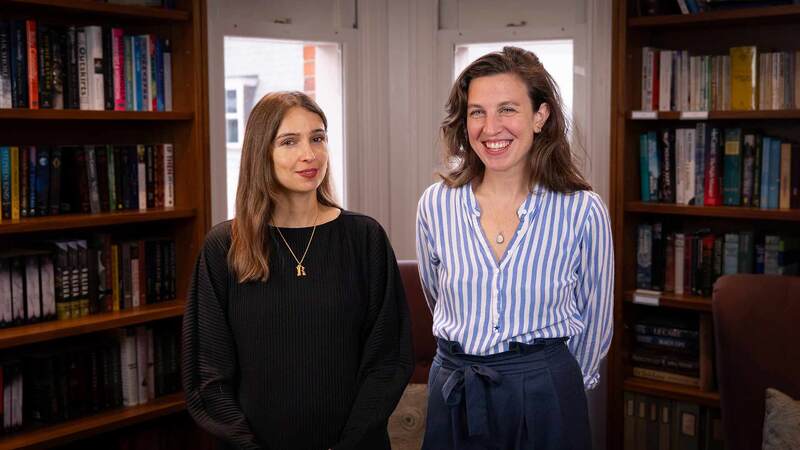You are viewing your 1 free article this month. Login to read more articles.
Imogen Hermes Gowar | 'I could pour myself into getting a career or I could pour that same amount of myself into the book'
Imogen Hermes Gowar used to work as a gallery assistant at the British Museum. Some of the galleries were so quiet that she wouldn’t see another soul for hours on end and so she would while away the time making up stories about the objects on display. Her favourite spot was the Enlightenment Gallery, which she describes as “a clutter of stuff; natural history specimens, mummies, all sorts”. One of the exhibits is a mermaid, which makes an appearance in Gowar’s delightful dé but novel set in Georgian London, The Mermaid and Mrs Hancock (Harvill Secker, January).
The novel begins in 1785 with the portly middle-aged widower and sailing merchant Jonah Hancock disturbed at his home in Deptford by the captain of the “Calliope”, which set sail 18 months earlier and has not been heard of since. Captain Jones has returned without his ship, but with the most extraordinary treasure: a mermaid. The desiccated creature is small, brown and wizened like an apple, its lips drawn back in a terrifying sharp-fanged snarl. Mr Hancock is pained at the loss of his ship, but soothed by the assurances that his mermaid will cause a sensation and make a fortune when it is exhibited to the curious masses.
From a late 18th-century point of view, what you want is a wife who understands money the way that you do
Meanwhile, across London, courtesan Angelica Neal sits in newly rented rooms in Dean Street. Until very recently she was the kept mistress of a duke, but he has inconveniently died and left her without an income. She needs to relaunch herself into society and find another wealthy admirer, or return to the unpalatable bosom of Mrs Chappell, the “abbess” of King’s Place, a brothel with a very select clientele. How the destinies of Mr Hancock and his mermaid entwine with those of Angelica Neal unfolds over the course of the novel.
The Mermaid and Mrs Hancock is a gloriously immersive read, bringing Georgian London vividly to life. It was a time when London was expanding as never before, with an appetite for wonders brought back from around the world. It was a place to make money, to better oneself through whatever means were available. When we meet in a south London café , Gowar, a fresh-faced 30-year-old with a pale streak of aqua-marine in her hair, radiates enthusiasm for that period in history.
While she was still working at the British Museum, Gowar took an evening creative-writing class at City University but The Mermaid and Mrs Hancock really started to take shape when she gained a place on the renowned MA in Creative Writing at the University of East Anglia. It was, she says, “really good” to be mentored by crime writer Henry Sutton: “He was really big on motivation and plot and none of this atmospheric, wishy-washy nonsense, just ‘what is happening and why?’” she says, with a laugh.
Artefect fiction
Once Gowar had the 15,000 words needed for her MA dissertation - which gained a distinction, and won the Curtis Brown Prize - she then stopped writing the novel completely for nearly a year in order to put all her energies into research. After moving to London she found work in a café and managed to fit in near daily visits to the British Library around her shifts. Although she found some written sources invaluable - especially the lurid pamphlets popular at the time, which would detail the punishment meted out to law-breakers and often contained direct transcripts taken from the trials - she was strongly drawn to actual objects. “My undergraduate degree was in archaeology, anthropology and art history but it was basically about artefacts; what people used them for, how people made art, what adornment means.” So research-wise she was “coming from a discipline where you don’t expect there to be any historical written record to go to.
“Most women in the period didn’t keep a diary, or didn’t write letters that were kept...there is no written record of their internal world. But if you look at the dresses that they wore, and how they had been put together or mended, and how they displayed their bodies - or not - then that seemed to me to be quite an important insight into [those women] in the absence [of written records].”
The Mermaid and Mrs Hancock impresses with Gowar’s attention to vivid and sensual detail. When we first meet Angelica Neal, she is sitting at her dressing table, “as cool and fragrant as a rosewater custard” as her companion and dresser, Mrs Eliza Frost tweaks scorched curl-papers from her hair, curl-papers which are “dense with Wesleyan homily, snipped as they are from pious tracts passed out daily to the whores of Dean Street”.
When Mrs Chappell arrives, hoping to entice Angelica to work for her again, she is “built like an armchair, more upholstered than clothed, her bolster of a bosom heaving beneath cream taffeta and gold frogging”. Gowar explains that this character was directly inspired by one of the notorious bawds of the era, Charlotte Hayes, who ran a high-class brothel and whose “girls” may have included Emma Hamilton, later mistress of Lord Nelson. “She did believe, at least to an extent, that she was doing them a favour. That otherwise the girls would be on the streets, they’d be starving, they’d have venereal disease and it would be awful. Whether she believed it deep down or not, she argued that she was doing a good thing for these girls, she was elevating them.”
A love story...of sorts
At the heart of the novel is a love story, but one that is, as Gowar puts it, “an 18th-century-appropriate love story. I think that relationship - between a wealthy older man and a woman who needs to be looked after - we would have a problem with nowadays, but from a late 18th-century point of view, what you want is a wife who understands money the way that you do.”
After finishing the manuscript she sent it to Curtis Brown agent Karolina Sutton, who had been part of the judging panel for the Curtis Brown Prize. While her novel was on submission, Gowar says she found the attention overwhelming. “Writing is such a private thing, especially with the research I was doing, it was quite solitary and nerdy. I mean, no one is that interested in what you found out about the 18th century today. So to go from that, to having loads of people [at the publishing houses] read it and be so enthusiastic about it - I just didn’t know what to do at all.”
Meeting the trade
Sutton oversaw an intensely fought auction, with 10 keen publishers. Harvill Secker won with a six-figure advance and The Mermaid and Mrs Hancock is now its lead dé but fiction title for 2018. Gowar is already out meeting booksellers and reckons she may clock up 100 bookshop visits before publication in January.
It may read like a dizzying overnight success, but Gowar remembers all too clearly “sitting at the dining room table in the house share I was in at the time, and doing the thing that I did - sitting there with my laptop and writing - and realising that I was doing the exact same thing one year ago. Materially nothing had changed. I still have an unfinished novel, it’s got 80,000 more words on it but it still feels like the ending is as far away as it ever was.”
Post-MA she did think about embarking on what she calls a “proper” career, especially as her contemporaries progressed in theirs, but ultimately came to the conclusion that “I could pour myself into getting a career or a proper income or I could pour that same amount of myself into the book. I just knew I would be sadder if I didn’t choose the book.”









